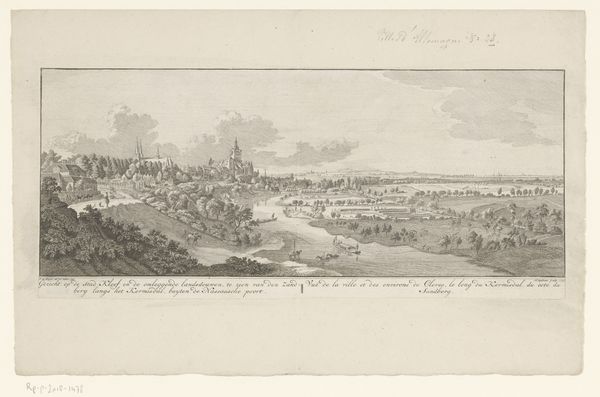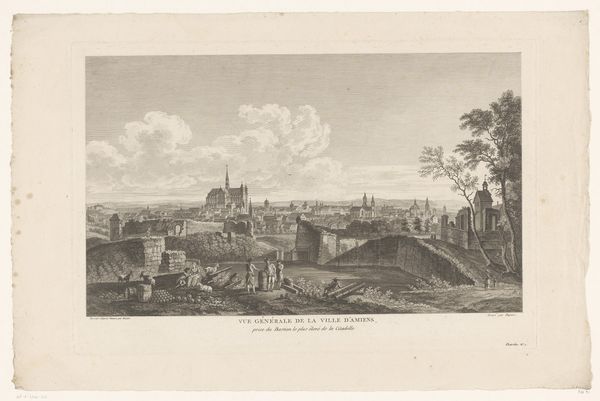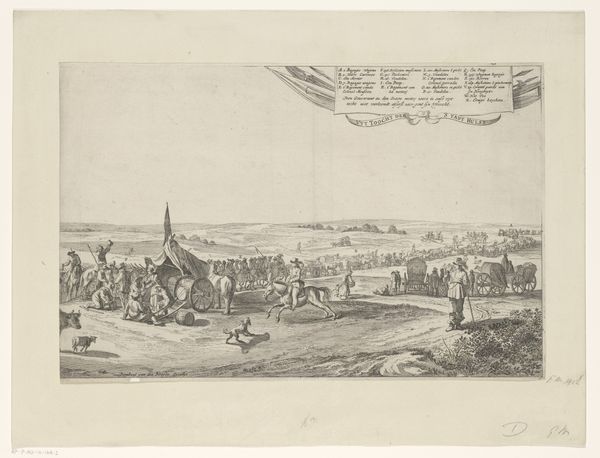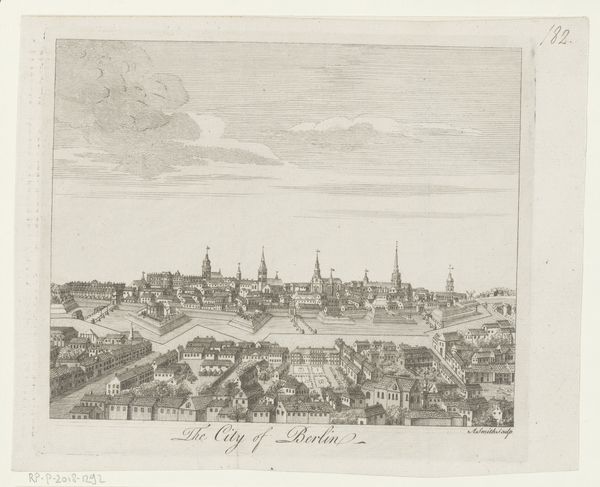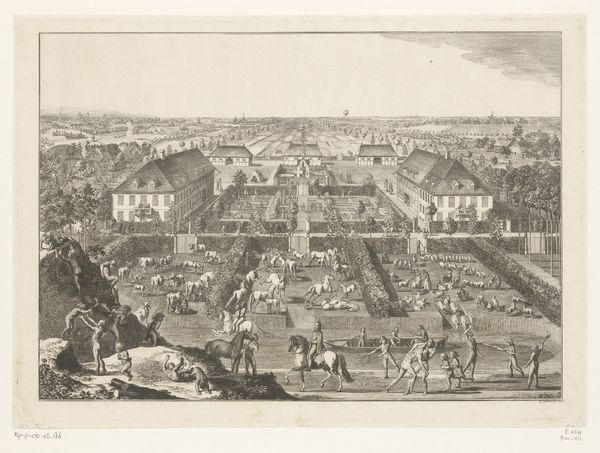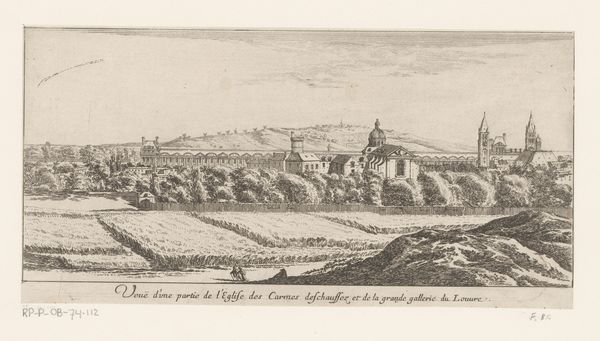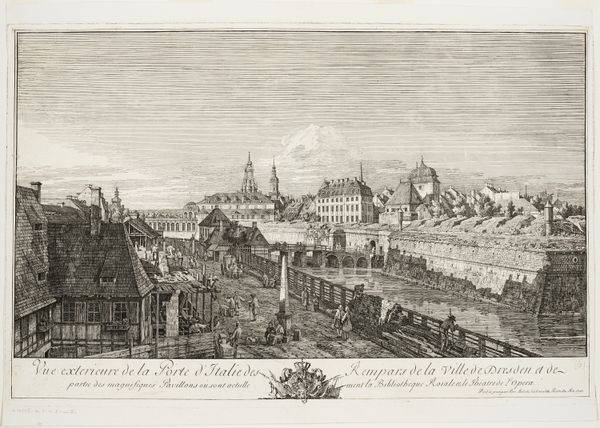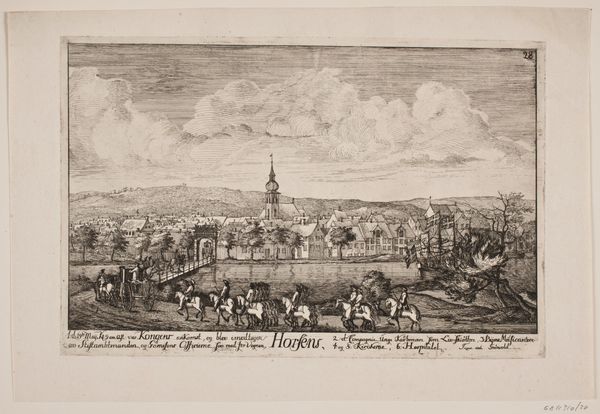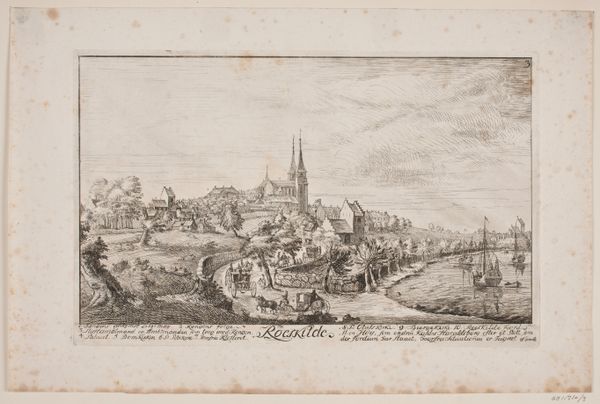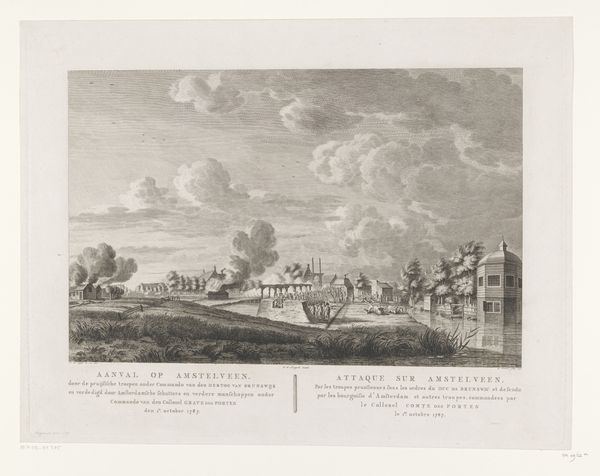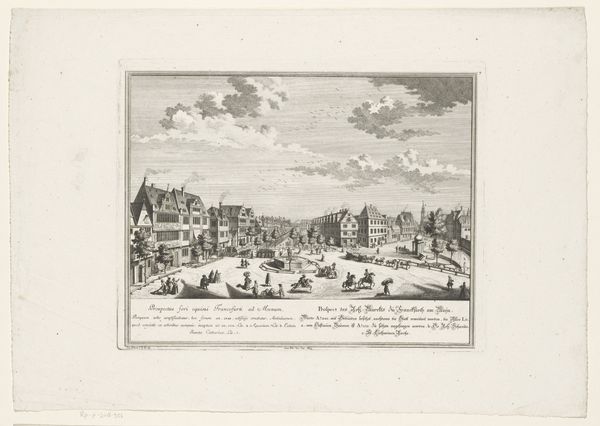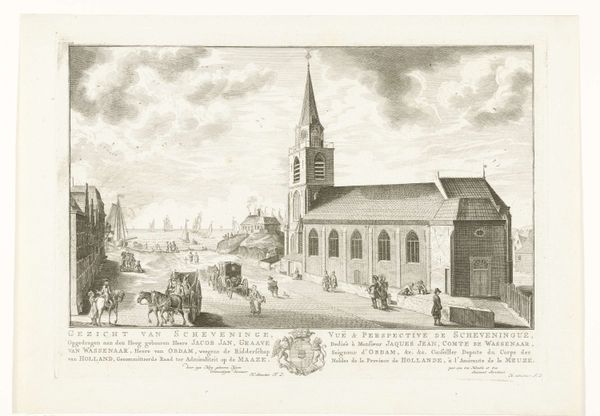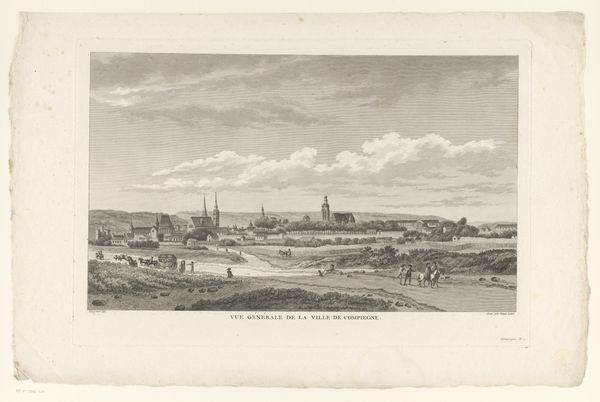
print, engraving
# print
#
landscape
#
history-painting
#
engraving
Dimensions: height 374 mm, width 485 mm
Copyright: Rijks Museum: Open Domain
Curator: This engraving from between 1815 and 1830 depicts "The Siege of Groningen, 1672." It’s currently held in the Rijksmuseum collection. Editor: It’s immediately striking. The city shrouded in smoke, the neat ranks of soldiers in the foreground... almost a stage-managed quality to the scene of warfare. Curator: Indeed. These types of historical prints played a significant role in shaping public memory and national identity in the Netherlands. They weren't necessarily about accurate reportage. It’s more about crafting a particular narrative of resilience and triumph. Editor: The engraving itself becomes part of the narrative. How many prints were made, and who bought them? The act of distributing an image like this is very deliberate. Looking closer, you see the variation in line work used to distinguish smoke, textiles, or grass – quite laborious work by Willem Hendrik Hoogkamer. Curator: Precisely. And this particular image served to legitimize and commemorate the actions of the governor during that time. Consider the prominent placement of the dedication; such prints were a crucial tool for distributing propaganda. The engraver has skillfully captured the tension between meticulous control over the image and the inherent chaos of war. Editor: Yes, chaos filtered through the engraver's deliberate hand. Even the plumes of smoke rising from the city seem carefully placed to showcase architectural details of Groningen despite the violence inflicted upon it. There’s almost a textile-like pattern created by the repeated lines in the sky. Curator: What do you think the lasting effect of these popular historical images has on the collective imagination? This kind of imagery would have formed, and continue to form, views of history and power. Editor: Well, focusing on the labor inherent in this craft of engraving really illustrates how art serves to both conceal and reveal systems of authority. This kind of precise work transforms warfare into an object to be examined and, crucially, consumed by the public. Curator: I think that the print asks us to consider not just what happened at Groningen but what it means to remember such an event, and who gets to shape that memory. Editor: Agreed. It compels you to ponder who profits from its creation and the act of bearing witness to, or even idealizing, violence from a safe distance.
Comments
No comments
Be the first to comment and join the conversation on the ultimate creative platform.
